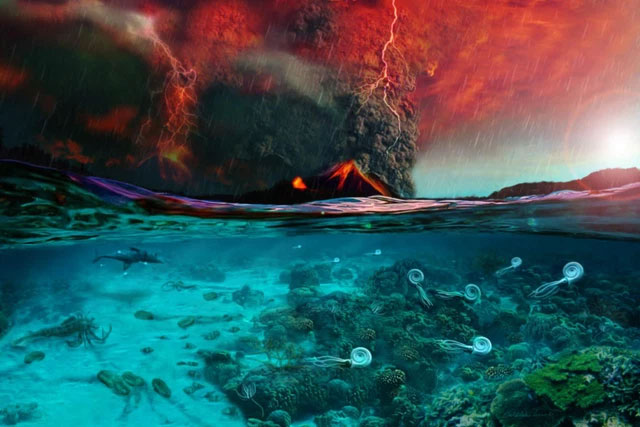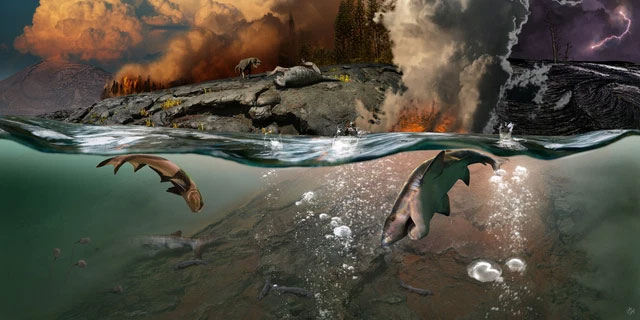The Earth has experienced five mass extinction events, which have diminished biodiversity and devastated the planet’s ecosystems. It turns out that the deadliest extinction event in Earth’s history also had another characteristic – it was incredibly “smelly.”
Scientists believe that volcanoes in what is now Siberia released greenhouse gases, leading to the most severe mass extinction event around 250 million years ago, at the end of the Permian period. These gases caused extreme warming, resulting in the extinction of 95% of marine species and 70% of terrestrial species.
To this day, scientists have not been able to precisely explain how the heat caused those deaths. A new study from the University of Riverside suggests that the temperature accelerated the metabolic rates of microorganisms, creating life-threatening conditions.

Gases caused extreme warming leading to species extinction.
“After the oxygen in the oceans was depleted to break down organic matter, microorganisms began to absorb sulfate and produce hydrogen sulfide, a gas that smells like rotten eggs and is highly toxic to animals,” researcher Dominik Hülse stated.
If humans inhale hydrogen sulfide, they may experience a range of symptoms including vomiting, diarrhea, insomnia, headaches, dizziness, and sneezing. With continuous exposure, one could become seriously ill and potentially die.
As microorganisms and the foundational plants of the ocean food chain decayed, other microorganisms quickly consumed the oxygen, leading to a deficiency of oxygen for larger organisms.
In low-oxygen conditions, sulfate-consuming microorganisms then released toxins, producing hydrogen sulfide (H2S), creating an extreme condition known as “euxinia.” Euxinia occurs when water is low in oxygen and hydrogen sulfide levels rise rapidly. Euxinic water bodies are often strongly stratified, with a thin, toxic surface layer.

Microorganisms absorb sulfate and produce hydrogen sulfide – a gas with a very toxic rotten egg smell.
The study published in the journal Nature Geoscience sheds light on the role of oceans in climate change, providing a glimpse into our future. With rising temperatures, euxinic water bodies in the oceans tend to become larger. These toxic areas can easily spread and have the potential to poison marine life.
The lessons from the ancient world could be crucial for us to understand the processes that are challenging modern oceans.


















































